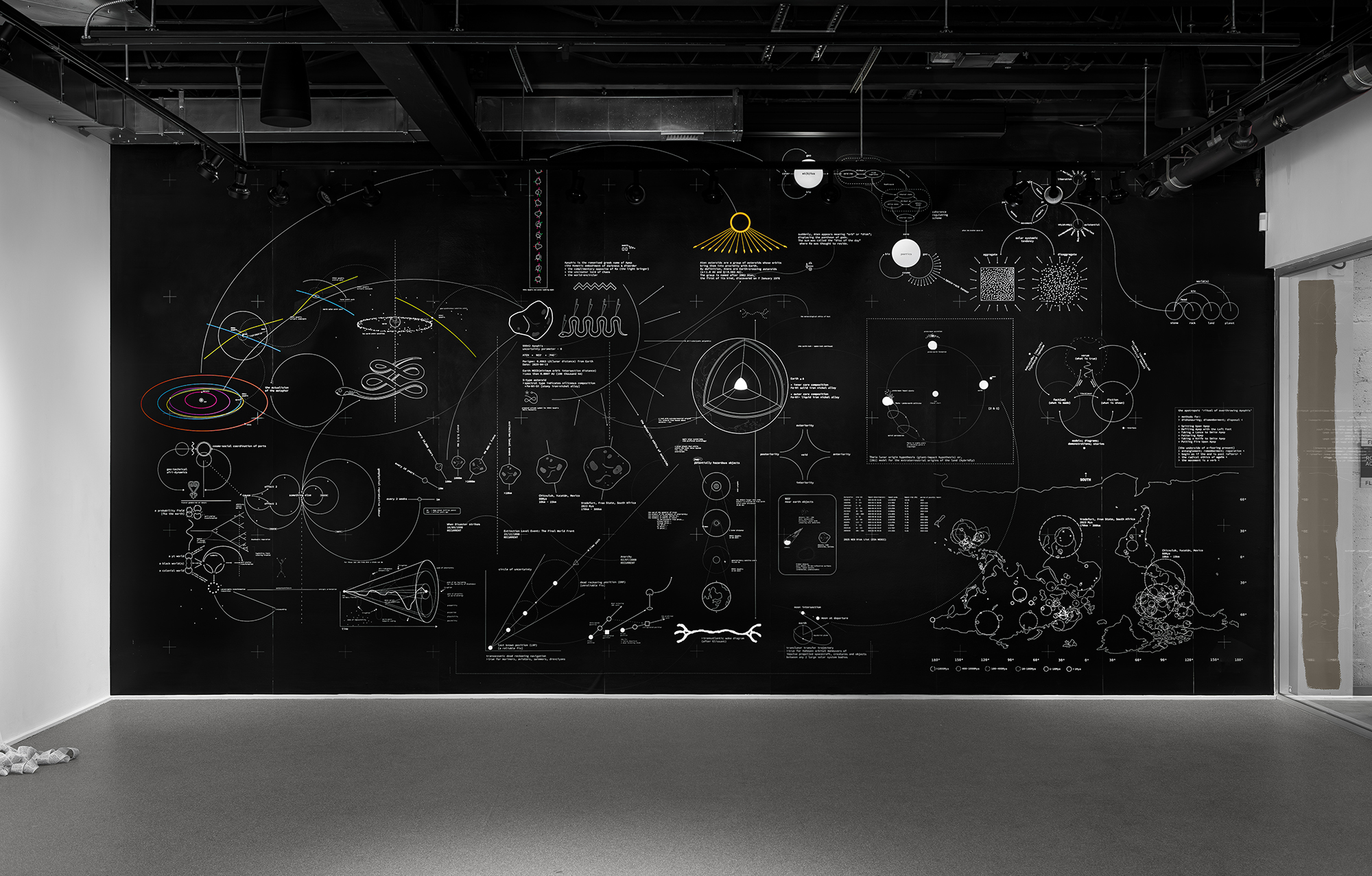The artist makes the case for an African understanding of the cosmos
Scientists once anticipated that 99942 Apophis, a near-Earth asteroid appropriately named after Apophis, the Ancient Egyptian god of disorder, would strike and potentially destroy the planet in April 2029. Concerns have since waned: if the rock makes contact, it won’t be for at least 100 years. But it is still close enough to our orbit for scientists to categorise it as a ‘potentially hazardous object’ (PHO), consecrating it within the uncomfortable ambit of uncertain questions and contingent risk. I learned about 99942 Apophis through the art of Nolan Oswald Dennis, which moves within this refractory orbit of the hazardous. Born in Lusaka and based in Johannesburg, Dennis is informed by African and diasporic relations to the Earth and the cosmos. Their incisive and excisional ‘para-disciplinary’ practice, which traverses sculpture, film, diagrams and other less readily categorised media (3D printing, algorithm-based text and time itself), summons and strategises with Black and Indigenous African forces to attempt to bring about the end of global modernity – a violent world-order governed by racial capital, expropriation and dispossession.
This year, Dennis’s work has been the subject of three solo exhibitions – UNDERSTUDIES at Zeitz MOCAA in Cape Town, overturns at Swiss Institute in New York and throwers at Gasworks in London. At Swiss Institute, their sprawling wall diagram recurse 4 a late planet (lush) (2024) left an intractable impression on me. In this work, the question of the potentially hazardous Apophis asteroid sits at the centre of an entangled network of astrological data, geological illustrations and mathematical expressions. Textual annotations, drawn from Black cosmopoietic and political thought, recast the data. Illustrations of 99942 Apophis and its shifting orbital proximity to Earth are threaded into a dense schema of drawn and written interventions, including Édouard Glissant’s fibrillose sketch of the transatlantic path of slave ships, probability tree diagrams and abstract line-drawings plotting out fractal recursions.
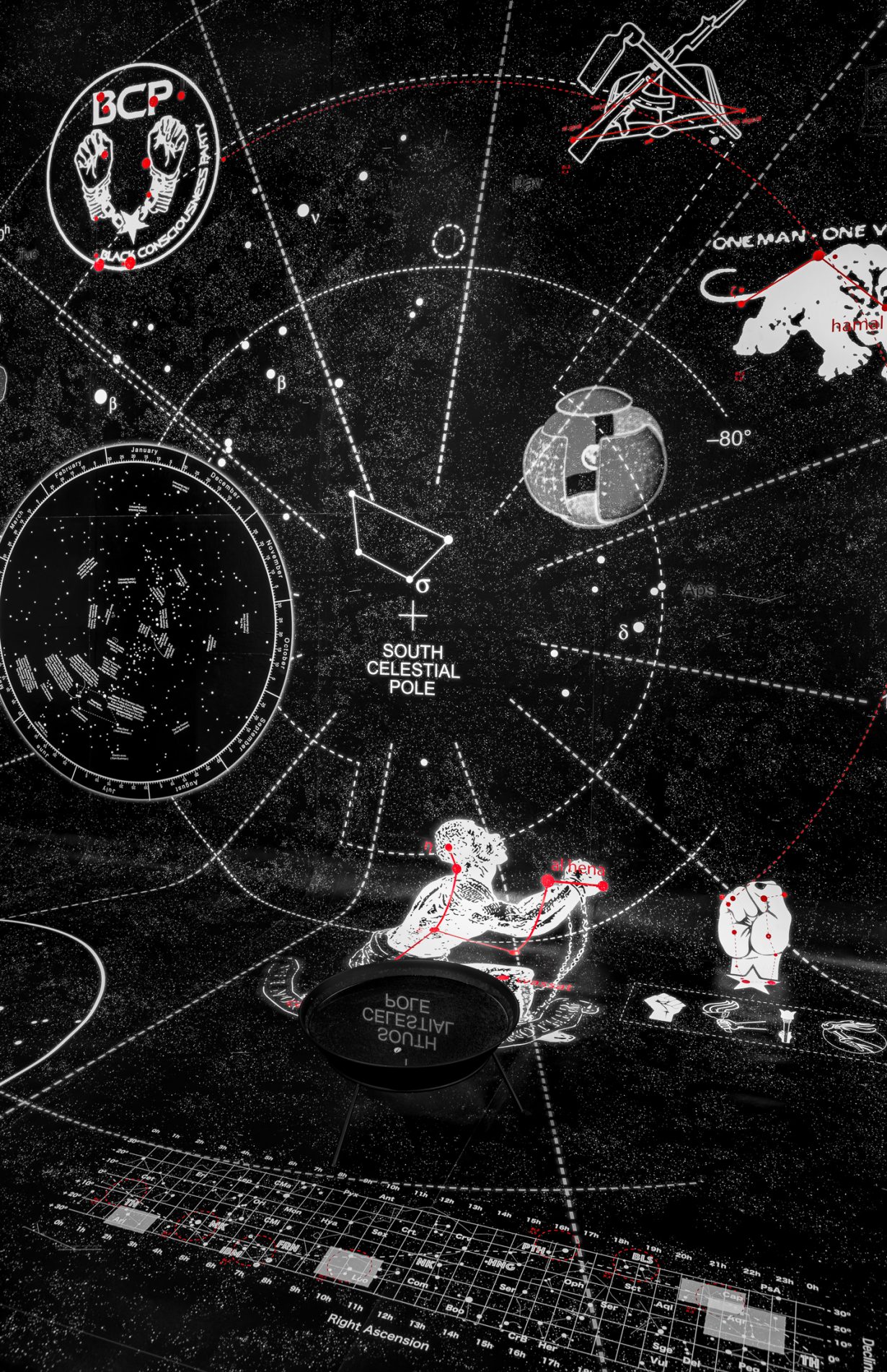
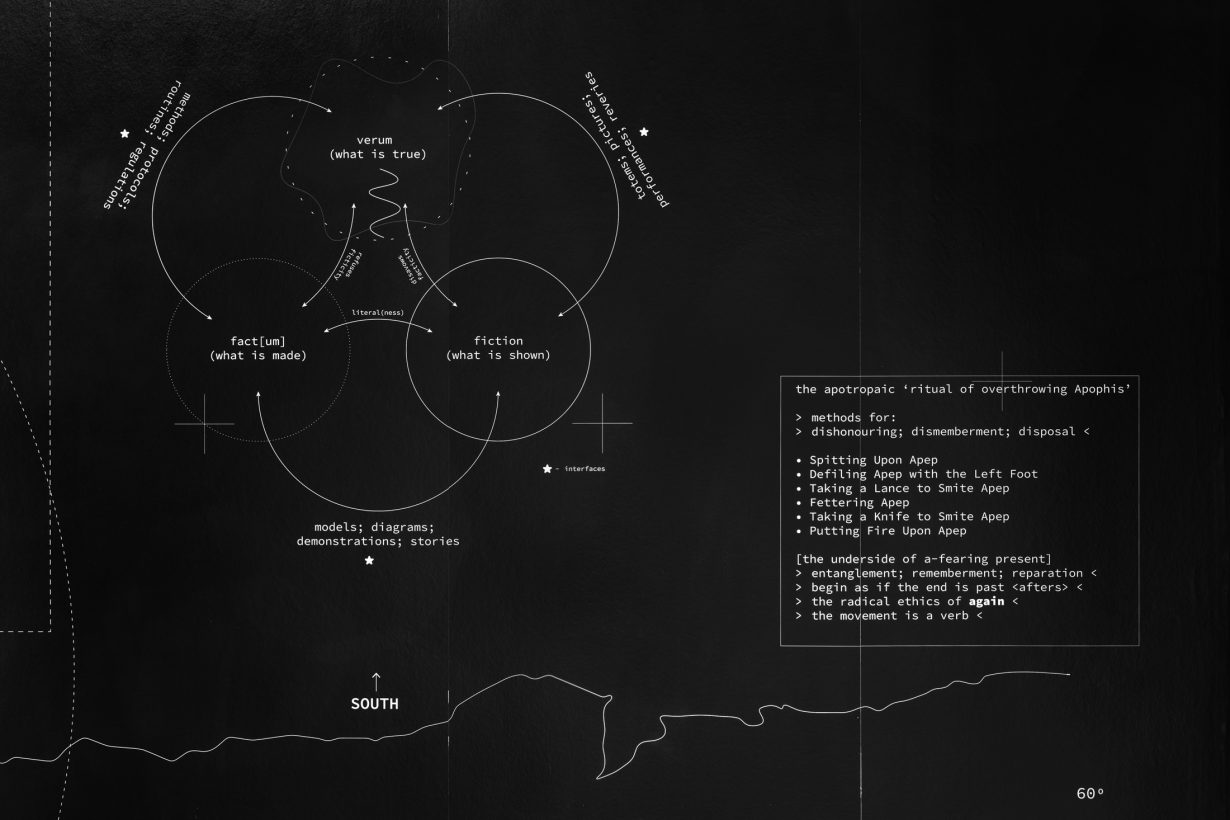
Other works, such as Black Liberation Zodiac (Molalatladi) (2018–) and recurse 4 (3) worlds (2023), likewise deploy diagrammatic mark-making to renew and renegotiate the aesthetic vocabulary of science, wresting it from the epistemic stranglehold of Western rationality and rerouting it towards Black imaginaries. The diagrams emerge in part from Dennis’s sustained engagement with Black science-fiction writers like Octavia Butler and Samuel Delany, as well as theorists such as Sylvia Wynter: these writers have helped sharpen what the artist has described as a once latent but always extant understanding that science does not belong solely to the extractive and abstractive designs of Western rationality. Dennis moves according to what Wynter has called ‘a new scientific order of knowledge, able to confront and deal with the hybridity of our modes of being human’. Their diagrams evoke an upheaval commensurate with Wynter’s proposition: full of convoluted and circumflex lines and vectors, they bear a rhizomatic density that refuses to be reduced. Rarely do we see isolated forms in Dennis’s work: things are constellated and concatenated; with-ness is the condition of appearance and arrangement here. The eye doesn’t know exactly where to land within these intricate assemblages, and that’s exactly the point. There is no trace of stasis, we are deterritorialised, dis- and relocated.
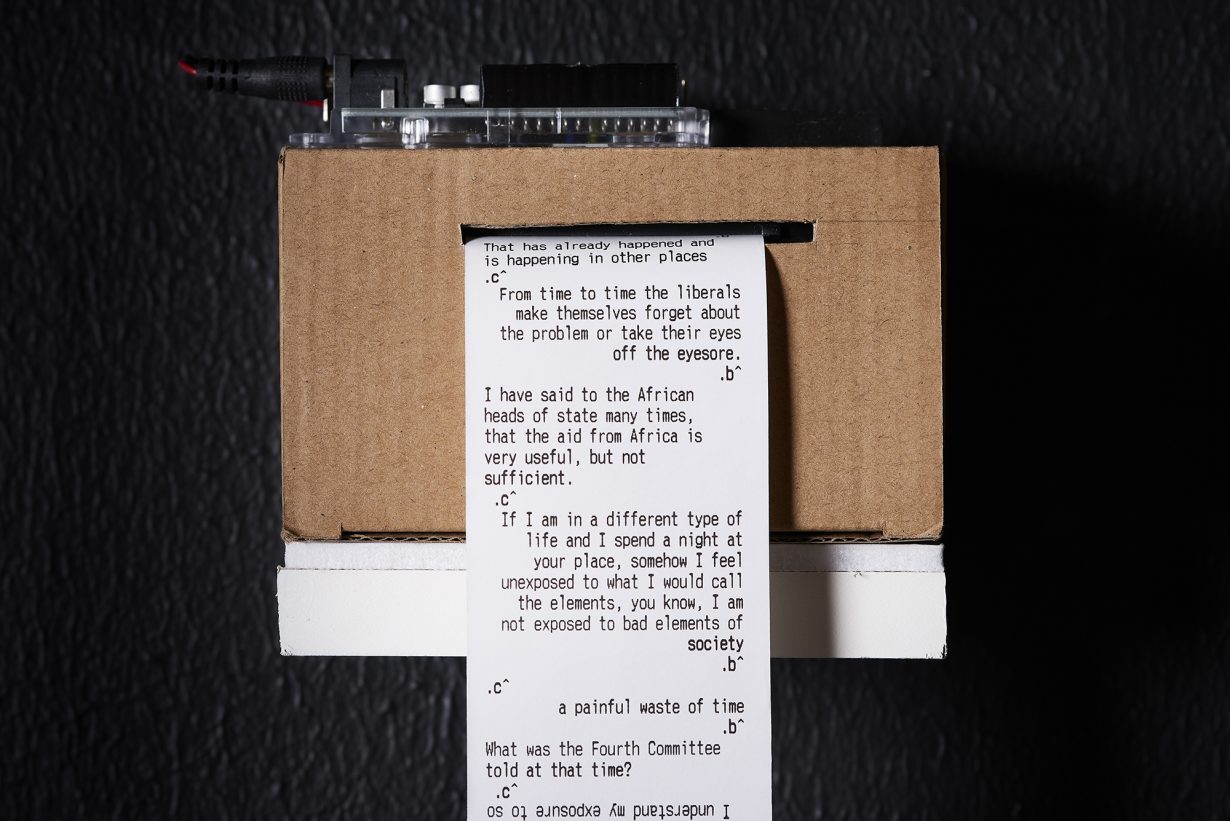
‘Cosmos’ comes from the Greek kosmos, meaning order of the universe. But the Apophis asteroid and so many other cosmic phenomena remind us that the galactic also ripples with the potential energy of disorder, with the charge of the unknowable and the chaos that gathers around it. So too do these phenomena turn our imagination outwards, beyond the order that we are made to inhabit, towards the planets and worlds that exist beyond this one. Dennis’s work mobilises the kernels of unpredictable perturbation that the cosmos brings to bear on the universe, and that Blackness brings to bear on the world. In their work, Blackness unfurls as an unsolvable variable, a demonic term in the equation of the planetary, an indeterminate shape of the new worlds that must come after this one.
The titles of Dennis’s trio of 2025 shows – UNDERSTUDIES, overturns, throwers – speak to the artist’s attention to the social production of space and the spatial arrangement of power (Dennis once studied architecture). In throwers we are invited to flip through binders that feature contemporary photographs of protesters around the globe throwing rocks at oppressors, alongside art-historical examples of rock bearers. Nearby, images of insurgent stone throwers are blown up and mounted in a largescale flip-book. These works are adjacent to graphics of giant meteorological rocks like 99942 Apophis in recurse 4 a late planet (2024). Present-day political conditions resonate with deep recesses of geological time and are translated into futural possibilities: if space rocks carry a world-ending hazard, what world orders might be destroyed when a protester throws a rock, and what new worlds might emerge in turn? How might these new worlds move against The World, modernity’s fixed, unitary and homogenised configuration of global hierarchies and violences?


Dennis’s shows at Gasworks and Swiss Institute are supplemented by a programming series titled ‘Black Earth Study Club’ – organised by Imani Mason Jordan and KJ Abudu, respectively – which brings scholars, writers and artists together to discuss Black ecocritical ethics. For Dennis, these discussions are occasions to rehearse for a future world and reminders that to be with the earth – to truly be with the earth liberated from The World – is to be with each other in study, thought and practice. Dialogue is also an integral component of their art, which emerges from a critical terrain sowed with the seeds of Black and post- and decolonial thinkers including Wynter, Steve Biko, Toni Cade Bambara, Paolo Freire and Amílcar Cabral. In a series of variously titled thermal-printer sculptures on view at both Swiss Institute and Zeitz MOCAA, Dennis generated imagined dialogues between several of these thinkers: for these, they designed an algorithm capable of searching for a certain set of shared words – including ‘always’, ‘means’, ‘time’, ‘place’, ‘who’ and ‘know’ – that appeared in the thinkers’ essays and speeches. Sentences containing these words were then threaded together to form ongoing conversations, which were printed out on a stream of receipt paper. The contingencies of the algorithm map unexpected and meandering connective tissues between thinkers: the lines of dialogue do not always run parallel to one another, but rather carry a poetics that is oblique and curved. In some of these, the two texts are layered atop one another, suggesting a total entanglement of voices. Another text-based work, further notes for a planet (nine-dash) (2024), orbits around a networked diagram of words referencing ‘worlds’ – including ‘improvised world(s)’, ‘black world(ing)’, ‘dream world(s)’, ‘shadow world(s)’, ‘queer world(s)’, ‘anti world(s)’, a ‘(k)new world’ – which are printed on nine black panels linked together by beaded threads. The piece oscillates between word-making and world-(un)making, inviting us to imagine possible connections between the terms it assembles together.
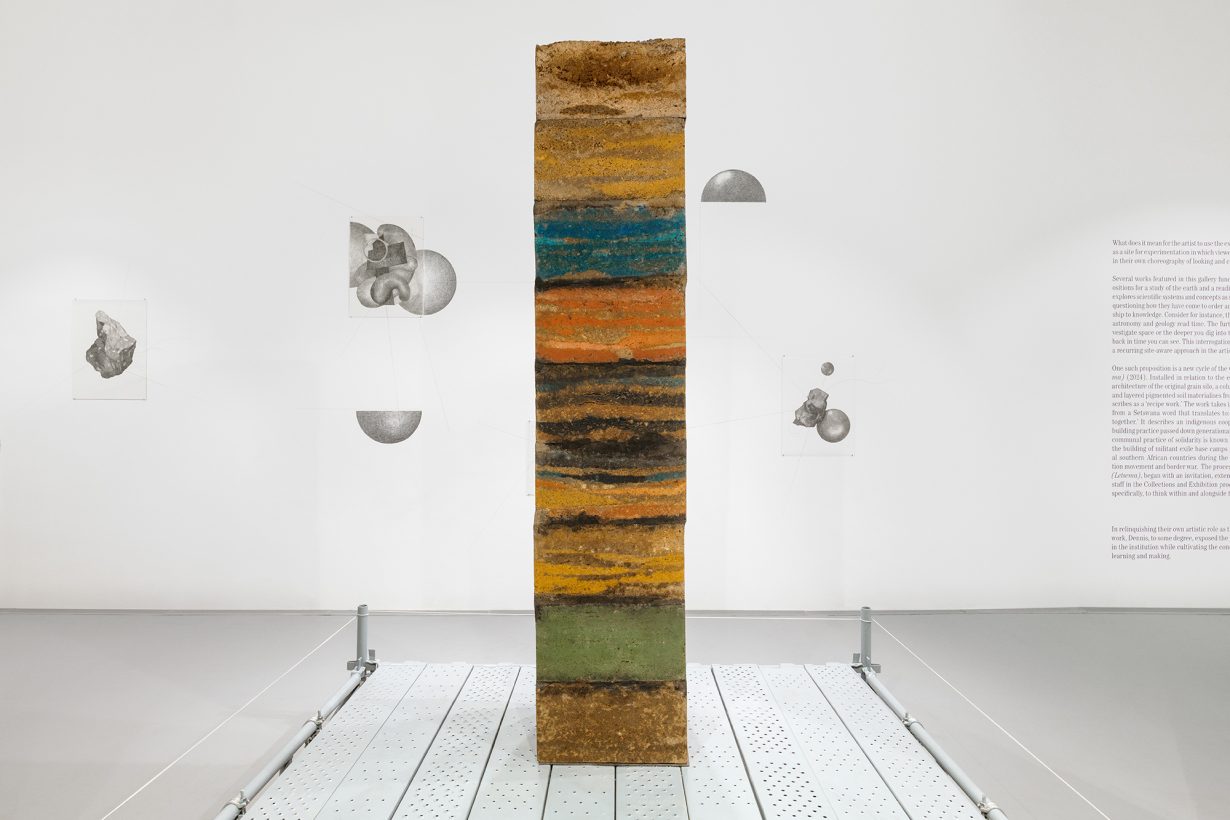
‘Apocalypse’ comes from Greek apo, meaning ‘un’, and kaluptein, meaning ‘to cover’. Dennis is an artist who continuously uncovers, excavating the discursive ground of The World – once thought of as a singular, stable and sovereign entity – to reveal an expanse of metamorphosing and multivalent worlds beneath it, worlds as layered as Xenolith (Letsema) (2024), a column that stands in Dennis’s exhibition UNDERSTUDIES. This stack of colourful soil, this cross-section of earth, evokes a crack in the ground from which a new world is ready to explode. Burrowing into the subterranean and subaltern, Dennis digs towards a core of underground and undercommons Black consciousness, turns beneath the earth and overturns The World.
Nolan Oswald Dennis: throwers is on view at Gasworks, London, through 22 June
Zoë Hopkins is a writer and critic based in New York
From the Summer 2025 issue of ArtReview – get your copy.
